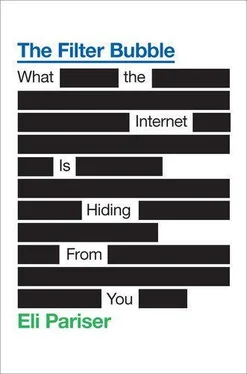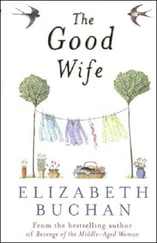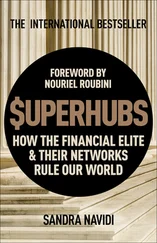Since Krishna Bharat created the first prototype of Google News to monitor worldwide coverage after 9/11, Google News has become one of the top global portals for news. Tens of millions of visitors pull up the site each month—more than visit the BBC. Speaking at the IJ-7 Innovation Journalism conference at Stanford—to a room full of fairly anxious newspaper professionals—Bharat laid out his vision: “Journalists,” Bharat explained, “should worry about creating the content and other people in technology should worry about bringing the content to the right group—given the article, what’s the best set of eyeballs for it, and that can be solved by personalization.”
In many ways, Google News is still a hybrid model, driven in part by the judgment of a professional editorial class. When a Finnish editor asked Bharat what determines the priority of stories, he emphasized that newspaper editors themselves still have disproportionate control: “We pay attention,” he said, “to the editorial decisions that different editors have made: what your paper chose to cover, when you published it, and where you placed it on your front page.” New York Times editor Bill Keller, in other words, still has a disproportionate ability to affect a story’s prominence on Google News.
It’s a tricky balance: On the one hand, Bharat tells an interviewer, Google should promote what the reader enjoys reading. But at the same time, overpersonalization that, for example, excludes important news from the picture would be a disaster. Bharat doesn’t seem to have fully resolved the dilemma, even for himself. “I think people care about what other people care about, what other people are interested in—most important, their social circle,” he says.
Bharat’s vision is to move Google News off Google’s site and onto the sites of other content producers. “Once we get personalization working for news,” Bharat tells the conference, “we can take that technology and make it available to publishers, so they can [transform] their website appropriately” to suit the interests of each visitor.
Krishna Bharat is in the hot seat for a good reason. While he’s respectful to the front page editors who pepper him with questions, and his algorithm depends on their expertise, Google News, if it’s successful, may ultimately put a lot of front-page editors out of work. Why visit your local paper’s Web site, after all, if Google’s personalized site has already pulled the best pieces?
The Internet’s impact on news was explosive in more ways than one. It expanded the news space by force, sweeping older enterprises out of its path. It dismantled the trust that news organizations had built. In its wake lies a more fragmented and shattered public space than the one that came before.
It’s no secret that trust in journalists and news providers has plummeted in recent years. But the shape of the curve is mysterious : According to a Pew poll, Americans lost more faith in news agencies between 2007 and 2010 than they did in the prior twelve years. Even the debacle over Iraq’s WMDs didn’t make much of a dent in the numbers—but whatever happened in 2007 did.
While we still don’t have conclusive proof, it appears that this, too, is an effect of the Internet. When you’re getting news from one source, the source doesn’t draw your attention much to its own errors and omissions. Corrections, after all, are buried in tiny type on an inside page. But as masses of news readers went online and began to hear from multiple sources, the differences in coverage were drawn out and amplified. You don’t hear about the New York Times ’s problems much from the New York Times —but you do hear about them from political blogs, like the Daily Kos or Little Green Footballs, and from groups on both sides of the spectrum, like MoveOn or RightMarch. More voices, in other words, means less trust in any given voice.
As Internet thinker Clay Shirky has pointed out, the new, low trust levels may not be inappropriate. It may be that the broadcast era kept trust artificially high. But as a consequence, for most of us now, the difference in authority between a blog post and an article in the New Yorker is much smaller than one would think.
Editors at Yahoo News, the biggest news site on the Internet, can see this trend in action. With over 85 million daily visitors, when Yahoo links to articles on other servers—even those of nationally known papers—it has to give technicians advance warning so that they can handle the load. A single link can generate up to 12 million views. But according to an executive in the news department, it doesn’t matter much to Yahoo’s users where the news is coming from. A spicy headline will win over a more trusted news source any day. “People don’t make much of a distinction between the New York Times and some random blogger,” the executive told me.
This is Internet news: Each article ascends the most forwarded lists or dies an ignominious death on its own. In the old days, Rolling Stone readers would get the magazine in the mail and leaf through it; now, the popular stories circulate online independent of the magazine. I read the exposé on General Stanley McChrystal but had no idea that the cover story was about Lady Gaga. The attention economy is ripping the binding, and the pages that get read are the pages that are frequently the most topical, scandalous, and viral.
Nor is debundling just about print media. While the journalistic hand-wringing has focused mostly on the fate of the newspaper, TV channels face the same dilemma. From Google to Microsoft to Comcast, executives are quite clear that what they call convergence is coming soon. Close to a million Americans are unplugging from cable TV offerings and getting their video online every year—and those numbers will accelerate as more services like Netflix’s movie-on-demand and Hulu go online. When TV goes fully digital, channels become little more than brands—and the order of programs, like the order of articles, is determined by the user’s interest and attention, not the station manager.
And of course, that opens the door for personalization. “Internet connected TV is going to be a reality. It will dramatically change the ad industry forever. Ads will become interactive and delivered to individual TV sets according to the user,” Google VP for global media Henrique de Castro has said. We may say good-bye, in other words, to the yearly ritual of the Super Bowl commercial, which won’t create the same buzz when everyone is watching different ads.
If trust in news agencies is falling, it is rising in the new realm of amateur and algorithmic curation. If the newspaper and magazine are being torn apart on one end, the pages are being recompiled on the other—a different way every time. Facebook is an increasingly vital source of news for this reason: Our friends and family are more likely to know what’s important and relevant to us than some newspaper editor in Manhattan.
Personalization proponents often point to social media like Facebook to dispute the notion that we’ll end up in a narrow, overfiltered world. Friend your softball buddy on Facebook, the argument goes, and you’ll have to listen to his political rants even if you disagree.
Since they have trust, it’s true that the people we know can bring some focus to topics outside our immediate purview. But there are two problems with relying on a network of amateur curators. First, by definition, the average person’s Facebook friends will be much more like that person than a general interest news source. This is especially true because our physical communities are becoming more homogeneous as well—and we generally know people who live near us. Because your softball buddy lives near you, he’s likely to share many of your views. It’s ever less likely that we’ll come to be close with people very different from us, online or off—and thus it’s less likely we’ll come into contact with different points of view.
Читать дальше











